While Russian gothic style does not have much in common with European gothic, it played a significant role in the history of the Russian architecture. Russian gothic emerged under Catherine the Great as a loose mixture of European gothic and Moscow baroque motives. Filled with freemason symbols and mysterious tokens, the style rapidly gained popularity and was in vogue until the beginning of the 20th century.
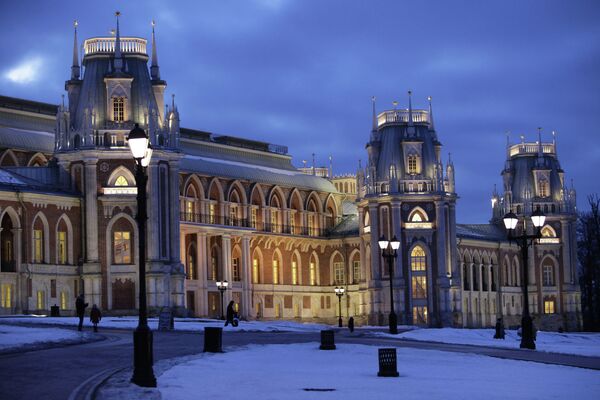
The unique architectural ensemble of Tsaritsyno in Moscow was initially designed as a Russian imperial residence. The construction began in 1776 and lasted for two decades. The project was headed by prominent architects Vasily Bazhenov and Matvei Kazakov. While the construction was not completed, it is still the most significant pseudo-gothic building of 18th century Europe. It is also the only pseudo-gothic palace. The architectural principles elaborated by Bazhenov and Kazakov formed an entirely new movement in Russian architecture. The ensemble was restored in 2006-2007 and now is part of the Tsaritsyno Museum Reserve.
Above: A view of the Tsaritsyno State Museum Reserve.
Above: A view of the Tsaritsyno State Museum Reserve.

The Priory Palace in Gatchina was constructed by architect Nikolai Lvov in 1789-1799. It resembles an average European gothic monastery. The palace features a pinnacle surrounded by the other parts of the building. The palace was built as a summer residence for the Russian Grand Priory of the Order of St. John. However, when the construction was completed, the Order was led by Emperor Pavel I. After he died, the palace was not used. Under the building, there is an ancient underground tunnel which still has a number of secrets to be unraveled.
Above: Priory Palace in Gatchina, St. Petersburg, Russia.
Above: Priory Palace in Gatchina, St. Petersburg, Russia.

The cathedral is located on a hill, on the territory of the former Mozhaysk Kremlin. It was built between 1779 and 1812 and partially encompassed the ancient walls of the Kremlin. The project was designed by Alexei Bakarev. Initially, the building featured five cupolas, but after restoration started in the beginning of the 19th century a large dome with four little cupolas was built. During the Great Patriotic War of 1914-1945, the cathedral was seriously damaged. The building was restored and handed over to the Borodinsky Military and Historic Museum.
Above: Novo-Nikolsky Cathedral, Mozhaysk, outside Moscow.
Above: Novo-Nikolsky Cathedral, Mozhaysk, outside Moscow.
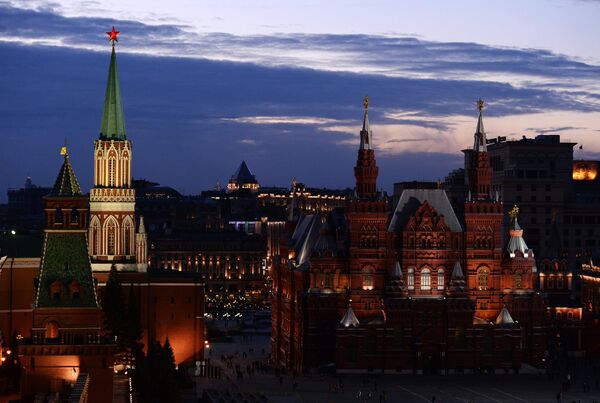
The Nikolskaya Tower is the only gothic piece in the Moscow Kremlin. The tower was designed by Italian architect Pietro Antonio Solari and built in 1491. Then, it was rebuilt for several times due to fires. The tower gained its contemporary design in 1805-1806. The white-stone top of the tower featuring the four little towers on the rampart was designed by architects Luigi Rusca and Alexei Bazhenov.
Above: A view of the Senatskaya and Nikolskaya towers of the Moscow Kremlin and the State History Museum.
Above: A view of the Senatskaya and Nikolskaya towers of the Moscow Kremlin and the State History Museum.
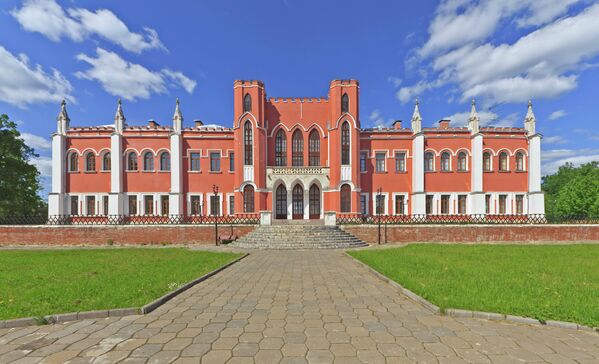
At different times, the Marfino Estate was owned by Russia’s major aristocratic families of Golitsyns, Saltykovs, Orlovs and Panins. The gothic look of the building was designed in the middle of the 19th century by architect Mikhail Bykovsky. The core of the entire ensemble is the main building with wings, gates and a watchtower. The façade of the estate resembles a medieval castle. The building was nationalized in 1918, and since 1944 it has been a military.
Above: The Marfino Estate, outside Moscow.
Above: The Marfino Estate, outside Moscow.
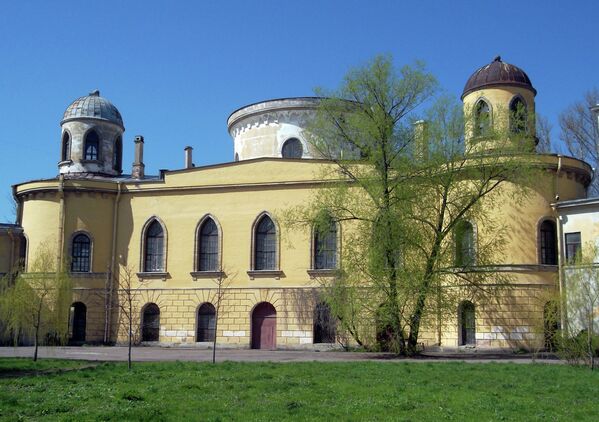
This imperial palace was constructed in 1774-1777 by architect Yuri Felten on the order of Catherine the Great to commemorate the victory over the Turkish fleet in the Battle of Cesma. It is designed in the form of an equal triangle, with towers on its corners.
Above: Chesmenskiy Palace, St. Petersburg.
Above: Chesmenskiy Palace, St. Petersburg.
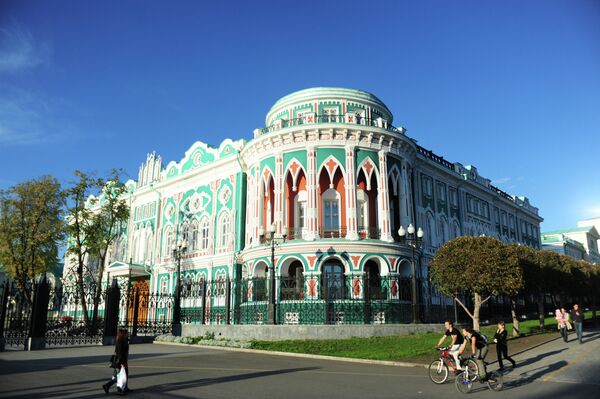
The house of collegiate assessor Nikolai Sevastyanov, with its notable corner rotunda, is one of the most significant landmarks in Yekaterinburg. It is the only neo-gothic architectural monument in the Ural Region. Initially, the building was built in a classical style. In 1863-1866, it was rebuilt on the design of Alexander Paduchev. In 2008, the building was restored as a residence of the Russian president ahead of a SCO summit. It was also enlisted as a federal cultural legacy site.
Above: A view of Sevastyanov's house, Yekaterinburg.
Above: A view of Sevastyanov's house, Yekaterinburg.
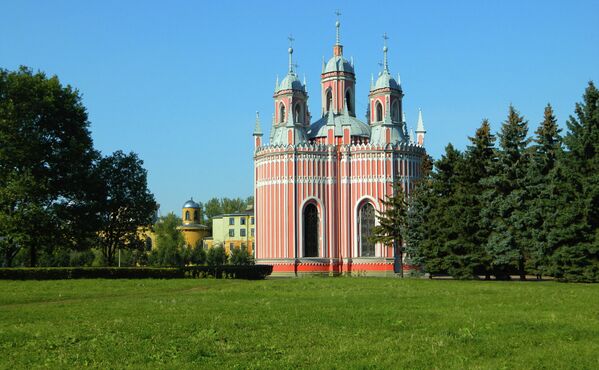
The Chesme Church was built in 1777-1780 by the design of Yuri Felten to commemorate the victory over the Turkish Fleet in the Battle of Cesma. There is a belief that Catherine the Great learned about the victory right on the site where the church was built. The church features Gothic arches, a lenticular rampart and several pinnacles. The church was closed in 1919, and housed several different institutions during the Soviet era. In 1991, church service was resumed.
Above: The Chesme Church of St. John the Baptists, St. Petersburg.
Above: The Chesme Church of St. John the Baptists, St. Petersburg.

One of the most notable pieces of Russian gothic, the Petrovsky Palace in Moscow was designed by Matvei Kazakov and was built in 1776-1780. Initially, the palace was designed as a resort for senior officials travelling from St. Petersburg to Moscow. The building witnessed a number of important events of Russian history. After the revolution in 1917, the palace housed the museum of the Red Air Forces. Currently, the building is a luxury hotel and business center.
Above: A view of the Petrovsky Palace, Moscow.
Above: A view of the Petrovsky Palace, Moscow.
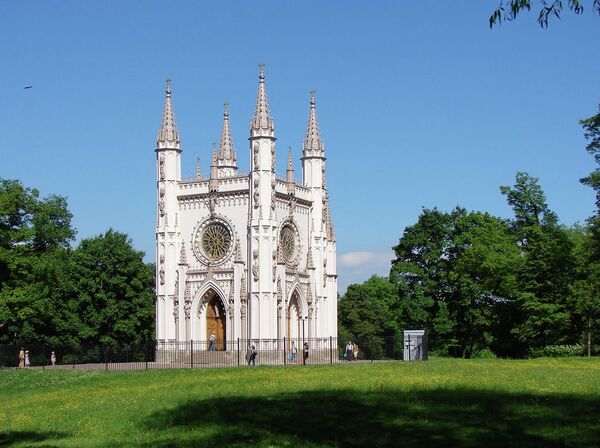
The family chapel of the Russian Imperial family was built in 1831-1834 by architect Karl Friedrich Schinkel, a notable person in the so-called historic romanticism in the German architecture. After the revolution, a museum was opened in the church. In 2006, it resumed church service.
Above: The gothic chapel of the Church of St. Alexander Nevsky, Peterhof, St. Petersburg.
Above: The gothic chapel of the Church of St. Alexander Nevsky, Peterhof, St. Petersburg.
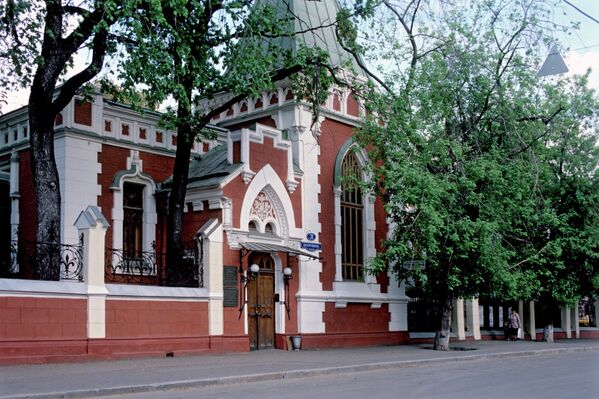
The Bakhrushin Theatre Museum, formerly the house of prominent merchant and philanthropist Alexei Bakhrushin, is a single-floor estate with early English gothic elements. It was built in 1898 by the design of architect Karl Gippius. The building has asymmetric planning and is decorated with a large window framed with a fancy attic. The building was expanded in 1937-1938, but the initial decoration was kept in place. Nowadays, it is the largest theater museum in the world.
Above: The Bakhrushin Theatre Museum, Moscow.
Above: The Bakhrushin Theatre Museum, Moscow.
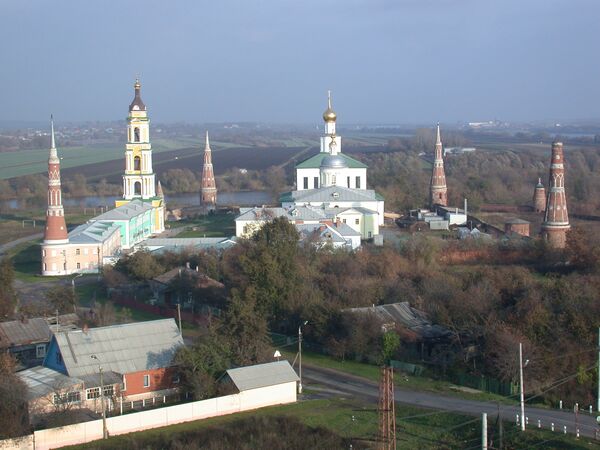
The Staro-Golutvinsky Epiphany monastery was established in the very end of the 14th century, near the confluence of the Moskva and Ob Rivers. Currently, the monastery is an collection of buildings from various epochs and styles. The pseudo-gothic towers are located in the north-west and north-east parts of the wall. They were designed by Matvei Kazakov and built in 1778.
Above: The Staro-Golutvinsky Epiphany Monastery, Kolomna.
Above: The Staro-Golutvinsky Epiphany Monastery, Kolomna.



